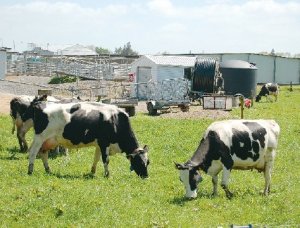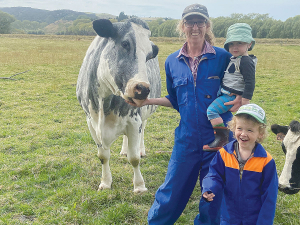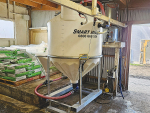Copper is generally the most commonly deficient essential trace element in New Zealand production animals. Copper has a vital role in a number of body processes and therefore copper deficiency will inevitably result in reduced financial returns.
Copper deficiency will lead to poor reproduction and fertility, and reduced milk production. Blood cell development and haemoglobin production require copper so deficiencies mean these processes are slowed. Poor immunity may be seen in copper deficient stock and effects on growth are seen when nerve, tissue and bone development and hair growth are reduced by low copper.
The mechanism of copper metabolism and the development of deficiency is complex, with primary and secondary effects contributing to deficiency. Primary copper deficiency results from inadequate dietary intake, i.e. deficient levels in the soil and pasture. Secondary deficiency is more complex, being due to interference by other elements in the soil leading to reduced availability of copper even if it is present in sufficient levels.
The key secondary deficiency in New Zealand systems is due to the element molybdenum (Mb) which competes with copper for uptake. Sulphur is also a problem as it forms complexes that inhibit copper uptake. Other elements such zinc, given during the facial eczema season in many parts of New Zealand, can block copper absorption. Even iron or contaminants such as cadmium in superphosphate fertiliser can have an effect.
The effect of copper deficiency can be subtle and you may not know there is a problem unless you test. Testing the stock themselves is the best and most reliable method but there is a place for soil and even pasture testing in some cases. Discuss your options for testing with your vet and devise a plan for what tests are most appropriate for your farm and when they should be done.
Copper supplementation can be done orally or by subcutaneous injection. Copper given orally can be variable in its rate of absorption and will be subject to secondary factors such as the presence of molybdenum in the diet.
Subcutaneous injection is reliable in that it allows direct treatment of stock, so you know they have been treated with an appropriate volume, rather than relying on the animal to self-dose through the water or hoping they reach sufficient levels through pasture applications.
The copper edetate in CopperMax dissipates from the injection site more rapidly than other forms of copper injections. This rapid uptake means there is less time in the tissues at the injection site so less painful swellings and injection site reactions.
CopperMax is a teal blue sterile fluid containing 50mg copper per ml of fluid (as Copper Edetate). It flows easily through the dosing gun and is and gives 3-4 months supplementation. Article supplied by Bayer Animal Health















